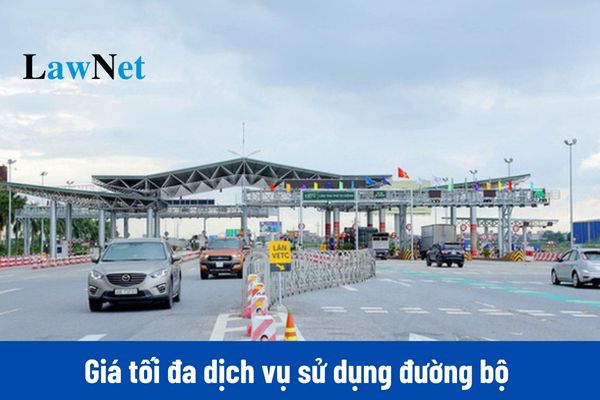What principles and basis are used to determine the maximum road user charge in Vietnam?
What is the maximum road user charge in Vietnam?
Pursuant to Article 5 of Circular 32/2024/TT-BGTVT (effective from January 1, 2025), provisions on the maximum road user charge are as follows:
The maximum road user charge is the maximum fee stipulated for a vehicle when passing through a toll station.

What principles and basis are used to determine the maximum road user charge in Vietnam? (Image from Internet)
What are the principles and basis for determining the maximum road user charge in Vietnam?
Based on Clause 1, Article 4 of Circular 32/2024/TT-BGTVT (effective from January 1, 2025), regulations on pricing of road services are provided as follows:
Pricing of Road Services
- The maximum road user charge is priced according to the principles and basis stipulated in Article 22 of the Price Law.
- The Vietnam Road Administration decides on the application of pricing methods as per the law on prices.
- When the factors forming the price for road services change and affect the maximum charge, the Vietnam Road Administration organizes the selection of investment project enterprises for road construction for business (Project Enterprises) to formulate a pricing plan.
...
Based on Article 22 of the Price Law 2023, the principles and basis for pricing are detailed as follows:
Principles and Basis for State Pricing
- The principles for state pricing are as follows:
a) Ensure coverage of reasonable, legitimate production and business costs; profit (if any) or accumulation according to legal guidelines (if any) aligning with the market level; ensure alignment with the goods and services supply-demand, market conditions at the time of pricing, and state socio-economic development policies for each period;
b) Ensure the rights and legitimate interests of the state, organizations, individuals doing business in goods and services, and consumers;
c) Consider and adjust prices when the elements forming the price change. Adjustments to the price of public products and services in investment projects following the public-private partnership method are implemented periodically as regulated in the project contract.
- The basis for state pricing is outlined as follows:
a) Elements forming the price of goods and services at the pricing time or the period for determining the price-forming elements in a pricing plan suitable to the characteristics and properties of goods and services;
b) The supply-demand relationship of goods and services, market demands, foreign exchange purchasing power; consumers' payment capability;
c) Domestic and world market prices and the competitiveness of goods and services.
Thus, the maximum road user charge is priced based on the following principles and basis:
(1) Principles
- Ensure coverage of reasonable, legitimate production and business costs; profit (if any) or accumulation according to legal guidelines (if any) aligning with the market level.
- Ensure alignment with the goods and services supply-demand, market conditions at the time of pricing, and state socio-economic development policies for each period.
- Ensure the rights and legitimate interests of the state, organizations, individuals doing business in goods and services, and consumers.
- Consider and adjust prices when the elements forming the price change. Adjustments to the price of public products and services in investment projects following the public-private partnership method are implemented periodically as regulated in the project contract.
(2) Basis
- Elements forming the price of goods and services at the pricing time or the period for determining the price-forming elements in a pricing plan suitable to the characteristics and properties of goods and services.
- The supply-demand relationship of goods and services, market demands, foreign exchange purchasing power; consumers' payment capability.
- Domestic and world market prices and the competitiveness of goods and services.
What are principles for determining the specific road user charge in Vietnam?
According to Clause 1, Article 6 of Circular 32/2024/TT-BGTVT, the principles for determining the specific charges are as follows:
Principles for Determining Specific Charges, Discounts, and Discounted Entities for Road Services
- The specific road user charge (hereinafter referred to as toll rate) shall not exceed the maximum charge for each type of vehicle as per the Decision issued on the maximum road user charge by the Minister of Transport.
- The monthly charge is the fee for a vehicle passing through a toll station in a 30-day period. The monthly charge is calculated by multiplying the toll rate stated in Clause 1 of this Article by 30 (thirty).
- The quarterly charge applies to a vehicle passing through a toll station in a 90-day period. The quarterly charge is calculated as three (3) times the monthly charge with a 10% discount.
- The toll rate, monthly charge, and quarterly road user charge for each project applicable to each type of vehicle are agreed upon by the competent authority and the Investor, Project Enterprise in the project contract.
...
Thus, the specific road user charge (hereinafter referred to as toll rate) is determined by the principle that it shall not exceed the maximum charge for each type of vehicle according to the Decision issued on the maximum road user charge by the Minister of Transport.

